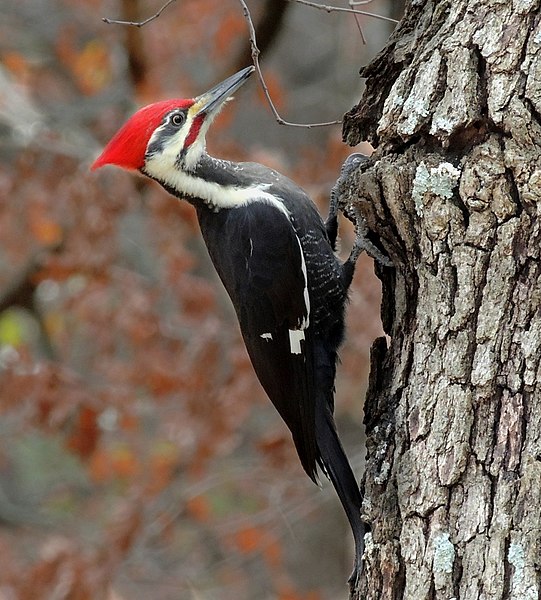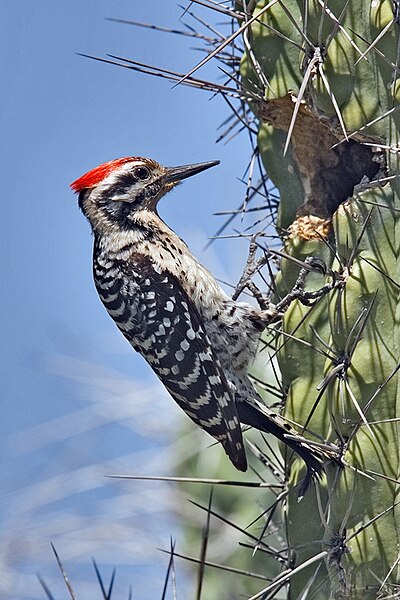The ivory-billed woodpecker is a woodpecker that is native to the bottomland hardwood forests and temperate coniferous forests of the Southern United States and Cuba. Habitat destruction and hunting have reduced populations so thoroughly that the species is listed by the International Union for Conservation of Nature (IUCN) on its Red List as critically endangered, and by the American Birding Association as "definitely or probably extinct". The last universally accepted sighting of an American ivory-billed woodpecker occurred in Louisiana in 1944, and the last universally accepted sighting of a Cuban ivory-billed woodpecker occurred in 1987, after the bird's rediscovery there the prior year. Sporadic reports of sightings and other evidence of the persistence of the species have continued since then.
Ivory-billed woodpecker
The contrast in plumage of the male (above) and female (below), separated by a detail of their bills
Illustration of left foot, showing zygodactyly typical of woodpeckers
The original range of the ivory-billed woodpecker (white) in the United States (green)
Woodpeckers are part of the bird family Picidae, which also includes the piculets, wrynecks and sapsuckers. Members of this family are found worldwide, except for Australia, New Guinea, New Zealand, Madagascar and the extreme polar regions. Most species live in forests or woodland habitats, although a few species are known that live in treeless areas, such as rocky hillsides and deserts, and the Gila woodpecker specialises in exploiting cacti. Woodpeckers are known as the loudest birds of the forest.
Woodpecker
A black-rumped flameback using its tail for support
Diagram showing the hyoid bone of Dendrocopos major
Use of cacti for breeding and roosting holes allows some woodpeckers to live in treeless deserts, such as the ladder-backed woodpecker, which uses cacti for nesting.








